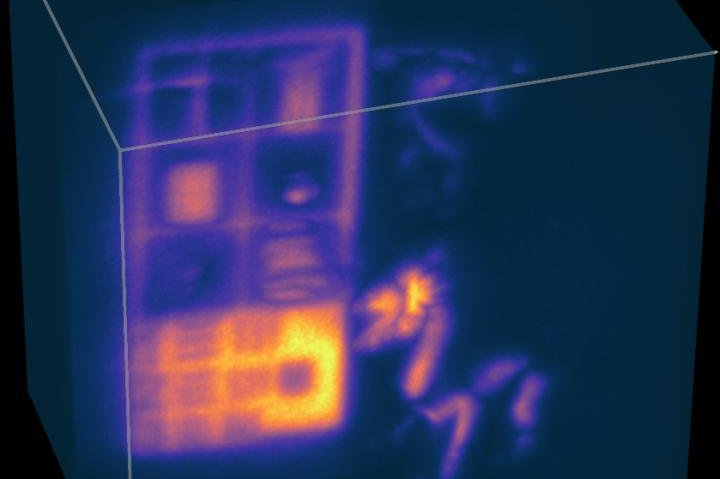Researchers were able to use their novel camera to film a variety of objects out-of-sight around a corner, including a person, stuffed animal and bookshelf. Photo by David Lindell/Stanford University
July 30 (UPI) -- Scientists have developed a way to film moving objects around an opaque corner.
The camera device uses a laser to isolate and measure the light particles bouncing off the target object. The particle data is processed by a combination of advanced sensors and algorithms, revealing the movements of the object around the corner.
"People talk about building a camera that can see as well as humans for applications such as autonomous cars and robots, but we want to build systems that go well beyond that," Gordon Wetzstein, an assistant professor of electrical engineering at Stanford University, said in a news release. "We want to see things in 3D, around corners and beyond the visible light spectrum."
The new camera is an updated version of a similar camera designed and built by Wetzstein and his research partners a few years ago. The latest iteration can detect light particles bouncing off a wider array of surfaces and can measure their movements more precisely from farther away, allowing the camera to process out-of-sight movements.
Researchers hope their technology could help the navigational systems of autonomous cars and robots.
The hardware used to build the novel camera systems is already common among autonomous car vision systems, but current systems can only monitor out-of-sight objects that are really, really reflective, limiting their usability.
For the new camera system, scientists integrated a laser 10,000 times more powerful than those used in autonomous car vision systems. The laser scans the wall opposing the target object. Little of the light reflecting off the moving object is intact by the time it is intercepted by the camera's laser, but there is enough photonic data for the camera's high-powered processing system to reconstruct an image of the moving object.
"When you're watching the laser scanning it out, you don't see anything," said David Lindell, a graduate student in electrical engineering at Stanford. "With this hardware, we can basically slow down time and reveal these tracks of light. It almost looks like magic."
Scientists based the camera's image processing algorithm off of algorithms used to interpret seismic waves and reconstruct 3D images of underground geologic structures.
"There are many ideas being used in other spaces -- seismology, imaging with satellites, synthetic aperture radar -- that are applicable to looking around corners," said Matthew O'Toole, an assistant professor at Carnegie Mellon University. "We're trying to take a little bit from these fields and we'll hopefully be able to give something back to them at some point."
The research team behind the new camera is scheduled to demonstrate and describe their technology Thursday at the SIGGRAPH 2019 conference.
Researchers plan to continue improving their technology by testing the system in autonomous research cars. Scientists also hope to adopt their technology for alternative applications, like medical imaging, as well as make their system robust enough to function in bad weather.















